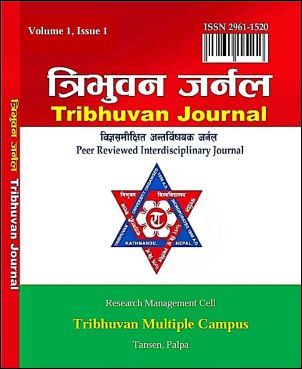Spectrophotometric Determination of Total Vitamin C Content in Different Fruits and Vegetables Consumed in Tansen, Palpa
DOI:
https://doi.org/10.3126/tribj.v1i1.53497Keywords:
Fruits and Vegetables, Metabolism, Scurvy, Spectrophotometer, Vitamin CAbstract
Vitamin C plays an important role in metabolism and is found in many fruits and vegetables. The purpose of this study was to estimate the total vitamin C content of some fruits and vegetables available in Tansen, Palpa, Nepal using the spectrophotometric method. In this method, ascorbic acid was oxidised to dehydroascorbic acidat 37°C with bromine water in a solution of acetic acid, which was coupled with 2,4-dinitrophenylhydrazine (DNPH). This solution produced a red-coloured complex with 85% H2SO4. The absorbance of that complex was determined at 530 nm. Fifteen samples of fruits and vegetables (lemon, grapes, orange, tomato, banana, pomegranate, sugarcane, carrot, apple, cucumber, potato, cauliflower, cabbage, sweetlime, and pomelo) were collected from the local market of Tansen to determine vitamin C content. Among fruits, vitamin C content was maximum in lemon (76.122 ppm) and minimum in cucumber (17.90 ppm), whereas, in vegetables, it was maximum in potato (26.107 ppm) and minimum in cabbage (13.106 ppm). The values of vitamin C content in different samples of fruits and vegetables were compared with the available literature values. This study has contributed to understanding the concentration of vitamin C in various fruits and vegetables.




